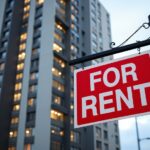Older homeowners have given their input on the state of the market and their desire to age in place. A significant majority of adults aged 50 and older (75%) want to age in their current homes, and 73% want to age in their communities, according to AARP‘s national 2024 Home and Community Preferences Survey.
This is much higher than the percentage of younger adults aged 18 to 49 (an estimated 60% and 63%, respectively), but current housing policies and community infrastructure are not keeping up with this growing demand.
“As people age, affordable and independent living isn’t just a preference—it’s essential for their wellbeing,” said Rodney Harrell, PhD, AARP VP of Family, Home, and Community. “Most older adults want to stay in their homes, yet rising housing costs and limited options create serious barriers. To meet this growing need, leaders at all levels and sectors must prioritize affordable, safe, and accessible housing and communities.”
It is clear that policy action is urgently needed. Only 36.5% of eligible households received government housing aid in 2021, while 11.2 million older people spent more than 30% of their income on housing. Over 30% of the income of over 10 million senior tenants was spent on housing. By 2040, the number of households headed by individuals aged 80 and over is expected to double, making it imperative that the U.S. address the issue of aging in place.
Elderly Homeowners Say Housing Hurdles are Imminent
According to the report, older individuals face major obstacles to remaining in their homes and communities:
- Housing Affordability: Of those over 50, nearly half (44%) anticipate moving, with rising housing costs—such as rent or mortgage (71%), property upkeep (60%), and taxes (55%), serving as the main driving force.
- Home Accessibility: More than half (51%) of persons over 50 believe they require a house that allows them to age independently. To support this, almost half anticipate that home modifications such as grab bars (72%), entryway improvements (71%), and kitchen upgrades (39%), will be necessary.
- Technology Barriers: Nearly half (44%) and two-thirds (64%) believe they require smart security features and a medical alert system, respectively, to keep them secure and independent, but broadband access and affordability are still issues. 22% of rural households still do not have high-speed internet access, which makes it difficult for them to use these technologies.
- Community Readiness: Only 50% of persons over 50 believe their communities are prepared to satisfy their requirements in the future, highlighting the importance of secure spaces, dependable utilities, and access to health care.
AARP Expands Policy Solutions for Elders Aging in Place
In order to assist the increasing number of senior citizens who want to age in their homes and communities, AARP has declared that it is spearheading a policy agenda:
- Affordable Housing: Support bipartisan legislation like the Affordable Housing Credit Improvement Act (AHCIA), which strengthens and expands the Low Income Housing Tax Credit to leverage private sector investment in affordable home construction and preservation, and expand rental assistance programs like the Housing Choice Voucher Program (Section 8).
- Creative Housing Solutions: As demonstrated by California’s recent law relaxing local limitations, remove obstacles to the development of Accessory Dwelling Units (ADUs) to give older folks more flexible housing options.
- Inclusive Zoning: The bipartisan Yes In My Backyard Act (S.1688 / H.R. 3507) and Montana’s 2023 middle housing and tiny home legislation are examples of state and federal zoning reforms that promote inclusive zoning and various housing alternatives by reducing red tape.
- Walkable Communities: To make every neighborhood more walkable, support initiatives like “Complete Streets” and make investments in infrastructure upgrades like crosswalks, sidewalks, and traffic-calming techniques.
- Digital Access: Promote initiatives that lower the cost of broadband internet, like the now-defunct Affordable Connectivity Program, so that low-income senior citizens can access telehealth, social connections, and other essential services that were crucial during the global pandemic and are still crucial today.
Older Homeowners Desire to Age in Place, But Many Don’t Believe They’ll Be Able To
According to Harrell, housing costs and communities aren’t often designed with older homeowners in mind. He went on to say that this is concerning since there will soon be more adults over 65 in the U.S. than children under 18.
“Many of our communities don’t have the housing that many aging adults can afford, with features that support them, in locations where they want to live,” Harrell said. “To meet this growing need, we must expand the nation’s housing stock and work to make our communities more livable with an all-ages mindset.”
One of the key concerns is the cost of house maintenance. The necessity for affordable housing is the primary factor given by 44% of those who believe a move will be required.
When anticipating the need to relocate, 71% of adults in that demographic mentioned rent or mortgage costs as a major concern. Additionally, 60% expressed a desire to reduce housing and maintenance expenses. High property taxes are another factor at work, as 55% of respondents cite them as a cause for moving. The need for a house that can survive natural disasters was also one of the top three reasons for moving, according to 55% of respondents.
Additionally, some 75% of adults over 50 still desire a single-family home, despite the fact that two-thirds of all adults believe downsizing is a good option. It’s interesting to note that more adults in the 18–49 age range than those over 50 said they would eventually like to live in an area that caters to senior citizens and offers a variety of housing options (townhomes, homes, apartments, etc.). Compared to people over 50, younger people are also more receptive to living in a continuing care community, which is a facility created to provide care throughout all stages of aging.
Old or young, homeownership is important. Aging in place is a luxury many Americans won’t be able to experience, so having the correct policies in place to assist them in doing so is crucial.
To read the full report, including more data, charts, and methodology, click here.







